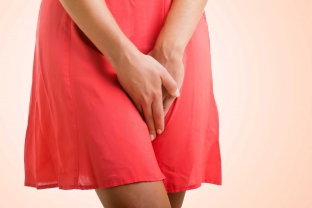Urinary incontinence is considered to be one of the main urological problems characteristic of childhood. However, in gynecological practice, this problem is also quite widespread and relevant. Today, almost every second woman over the age of 40 faces the problem of urinary incontinence. Involuntary excretion of urine during laughing, coughing or physical activity becomes an excruciating everyday problem that women are often embarrassed to talk about. But understanding this issue is necessary in order to differentiate organic pathology from stress incontinence and eliminate the problem of urinary incontinence in women.
Classification and causes of urinary incontinence in women
Urinary incontinence is several times more common in women than in men. This fact can be explained, first of all, by the peculiarities of the structure and functioning of the female genitourinary system. The close anatomical relationship between the reproductive and urinary organs leads to the fact that the pathology of one of the systems often entails the development of a disease in the other. The problem of urinary incontinence is very uncomfortable for women, many simply do not want to talk about this embarrassing issue, trying to cope with the problem on their own. But in most cases, this approach leads to serious psychological problems and a violation of the quality of life of a woman.
Urinary incontinence in women:
- The main causes of urinary incontinence in women;
- classification of pathology: types of urinary incontinence in women;
- combined forms of urinary incontinence in women.
The main causes of urinary incontinence in women
Involuntary urination or urinary incontinence in women is the loss of the ability to control the act of urination, as a result of which, during physical exertion and an increase in intra-abdominal pressure or independently of them, urine can be involuntarily and in different quantities. There are a large number of reasons for the occurrence of this condition, and therefore two main types of urinary incontinence in women can be distinguished:
- Urethral urinary incontinence:
- stress incontinence - insufficiency of urethral sphincters;
- detrusor instability: neuropathic and idiopathic;
- congenital urinary incontinence;
- urinary incontinence from bladder overflow;
- mixed urinary incontinence.
- Extraurethral urinary incontinence:
- congenital: ectopic ureter, bladder exstrophy;
- acquired: cystic, ureteral, urethral fistulas.

Classification of pathology: types of urinary incontinence in women
Worldwide, it is customary to divide urinary incontinence in women into 5 main types:
- stress incontinence - uncontrollable loss of urine during exercise;
- urge incontinence or overactive bladder - in this type of incontinence, uncontrolled urination occurs regardless of intra-abdominal pressure;
- reflex incontinence or neurogenic bladder - uncontrolled loss of urine associated with the pathology of the nervous system, with abnormal spinal activity;
- urinary incontinence from overfilling the bladder - overdistension of the walls of the bladder provokes insufficiency of the sphincter and uncontrolled flow of urine;
- extraurethral urinary incontinence - involuntary release of urine, not associated with damage to the sphincter, that is, below its level.
Combined forms of urinary incontinence in women
Combined forms of urinary incontinence in women are particularly complex pathological conditions that are quite difficult to cure. In such cases, stress urinary incontinence is associated with detrusor instability or hyperreflexia. If during stress urinary incontinence there is an involuntary release of urine during physical exertion without a previous urge to urinate, then with detrusor hyperactivity there is an imperative urge to urinate, followed by urination and even nocturia. Treatment of combined forms of urinary incontinence is carried out with the help of anticholinergic drugs, antidepressants and special exercises to train the muscles of the bladder. In the absence of the effect of conservative therapy, the patient is recommended surgical treatment of the disease.








Add a comment